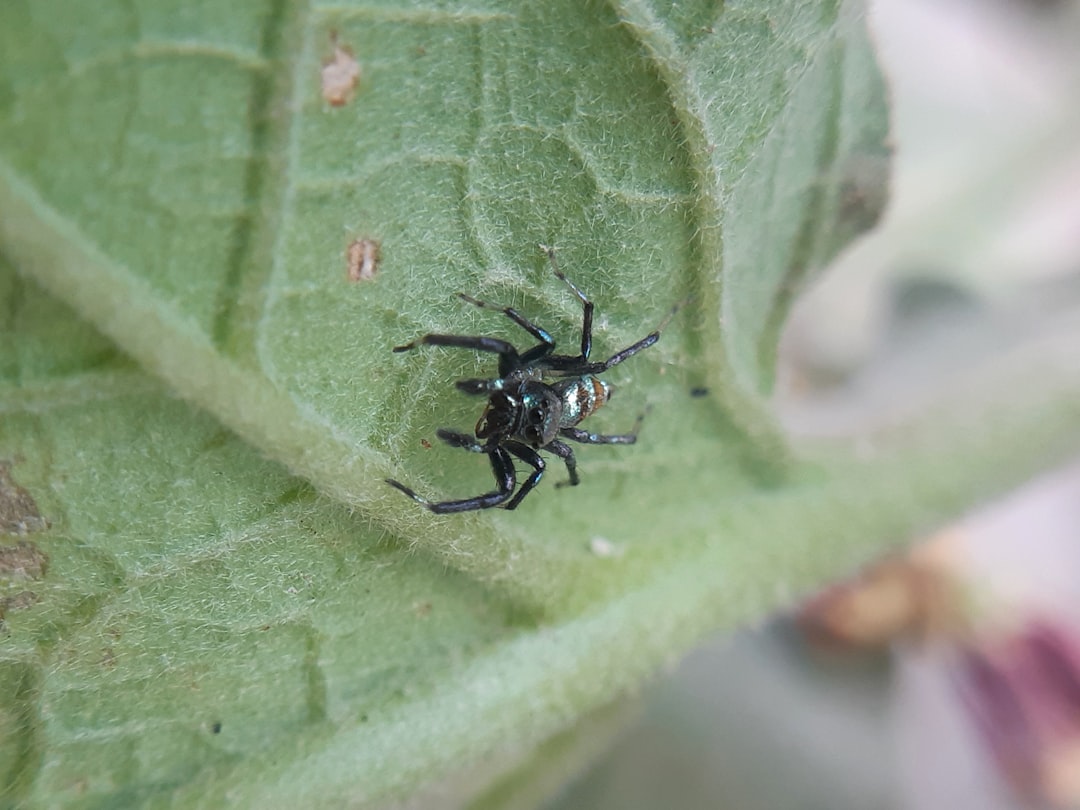6 Powerful Signs of a Spider Bite You Must Know
Are you aware of the signs that indicate you might have been bitten by a spider? Knowing how to identify a spider bite is crucial for prompt and proper treatment. In this comprehensive guide, we will delve into the common symptoms of spider bites, the severity and dangers associated with them, and the types of venomous spiders to be mindful of. Additionally, we will explore first aid measures, when to seek medical assistance, and preventive strategies to safeguard yourself and your loved ones from spider bites. Let’s empower ourselves with the knowledge needed to identify and address spider bites effectively.
Introduction
Spider bites are a common occurrence, especially in areas where spiders are prevalent. Knowing how to identify a spider bite is crucial for seeking appropriate treatment. In this section, we will cover the basic signs and symptoms of a spider bite, which will help you understand when it’s necessary to seek medical attention. Understanding how to identify a spider bite can also aid in differentiating it from other types of bug bites or skin irritations, allowing for a more targeted treatment approach.
When dealing with potential spider bites, it’s important to remain calm and observe the symptoms carefully. By being aware of the signs of a spider bite, you can take the necessary steps to address the situation promptly. Let’s delve into the specific signs and symptoms that can help you identify a spider bite and differentiate it from other common skin conditions.
Remember, understanding how to identify a spider bite is the first step towards ensuring your well-being and that of your loved ones. In the following sections, we will explore the specific symptoms and dangers associated with spider bites, as well as the essential first aid measures and preventative strategies.
Photo by Ram Kishor on Unsplash
Common Spider Bite Symptoms
When it comes to how to identify a spider bite, understanding the common symptoms is crucial. Here are the key indicators to look out for:
Redness and Swelling: A spider bite often leads to redness and swelling around the affected area.
Pain and Itchiness: You may experience pain, itchiness, or a burning sensation at the site of the bite.
Two Puncture Marks: Some spider bites may leave two distinct puncture marks on the skin.
Blister Formation: In some cases, the bite can result in the formation of blisters or a raised bump at the site of the bite.
Muscle Pain and Cramping: Spider venom can cause muscle pain and cramping, which may spread from the bite location.
Fever and Chills: In severe cases, individuals may experience fever, chills, and body aches after a spider bite.
Identifying these symptoms can help you take the necessary steps for treatment and seek medical help if needed. However, it’s important to note that these symptoms can vary depending on the type of spider and individual reactions.
Severity and Dangers of Spider Bites
When it comes to how to identify a spider bite, understanding the severity and potential dangers is crucial. Here’s what you need to know:
- Immediate Symptoms: Spider bites can result in immediate symptoms such as redness, swelling, and pain at the bite site.
- Progressive Effects: In some cases, the symptoms can progress to include muscle pain, fever, headache, and nausea.
- Allergic Reactions: Individuals may experience severe allergic reactions to spider bites, leading to difficulty breathing, swelling of the face or mouth, and rapid heart rate.
- Potential Complications: Without proper treatment, spider bites can lead to tissue death, open sores, and secondary bacterial infections.
- Severity Varies: The severity of a spider bite can vary based on the type of spider and the individual’s reaction to the venom.
| Pros | Cons |
|---|---|
| Early identification for prompt care | Symptoms may mimic other health issues |
| Treatment can prevent complications | Variability in severity makes diagnosis challenging |
| Awareness can lead to faster recovery | Misidentification of spider species can impact treatment |
Understanding the severity and potential dangers of spider bites is essential for prompt identification and appropriate medical intervention. If you suspect a spider bite, seek medical attention to ensure proper care.
Remember, early identification and treatment can significantly reduce the risks associated with spider bites.
Types of Venomous Spiders
When it comes to how to identify a spider bite, understanding the types of venomous spiders can be crucial. Different spiders have varying levels of venom toxicity, so being able to recognize them can help in assessing the potential seriousness of a spider bite. Here are some of the most common venomous spiders:
Black Widow Spider:
- Identified by its shiny black color and red hourglass-shaped mark on its abdomen.
- Found in dark, secluded areas like woodpiles, basements, and garages.
- The bite may initially go unnoticed but can lead to severe pain, muscle cramps, and other systemic symptoms.
Brown Recluse Spider:
- Light brown with a darker brown violin-shaped mark on its back.
- Typically found in warm, dry, undisturbed areas such as closets, attics, and sheds.
- Its bite may cause a red or purple lesion that can turn into a deep, painful ulcer.
It’s important to note that not all spider bites require urgent medical attention, but if you suspect a bite from a venomous spider, seeking prompt medical help is essential.
Photo by Ram Kishor on Unsplash
First Aid for Spider Bites
If you suspect that you or someone else has been bitten by a spider, it’s important to take immediate action. Here’s how to identify a spider bite and administer first aid effectively:
Clean the Bite Area: Use mild soap and water to gently clean the bite area to reduce the risk of infection.
Apply a Cold Compress: Applying a cold compress or ice pack wrapped in a cloth can help reduce swelling and alleviate pain.
Elevate the Area: If the bite is on a limb, elevate it to reduce swelling. This can be done by placing a pillow or cushion under the affected limb.
Use Over-the-Counter Medication: Over-the-counter pain relievers such as ibuprofen or acetaminophen can help alleviate pain and reduce inflammation.
Avoid Certain Actions: Refrain from using a tourniquet, cutting the wound, or attempting to suck out the venom. These actions can worsen the situation and should be avoided.
Monitor Symptoms: Keep an eye on the symptoms and seek medical attention if the condition worsens or if you experience severe symptoms such as difficulty breathing, muscle spasms, or intense pain.
Remember, while these first aid measures can offer relief, it’s crucial to seek medical help as soon as possible to ensure proper treatment for a spider bite.
By following these steps, you can effectively administer first aid in the event of a spider bite and potentially minimize its impact on your health.
Seeking Medical Help
If you are unsure about a spider bite or are experiencing severe symptoms, it’s crucial to seek medical help promptly. Here’s what to keep in mind:
Urgent Care: If you suspect a spider bite and the symptoms are severe or worsening, seek medical attention immediately. Time is of the essence, especially with venomous spider bites.
Medical Evaluation: A healthcare professional can properly assess the bite, identify the spider type if possible, and provide appropriate treatment. They can also determine if the symptoms are indeed from a spider bite or if there is another underlying issue.
Treatment Options: Medical professionals can administer antivenom or prescribe medications to alleviate pain, itching, and swelling. Prompt intervention can prevent the escalation of symptoms and complications.
Monitoring: In some cases, observation in a medical setting may be necessary, particularly for severe or systemic reactions to the spider bite.
Documentation: Keep track of the symptoms, onset, and any changes before seeking medical help. This information can assist healthcare providers in making an accurate diagnosis and determining the best course of action.
Remember, timely medical intervention is the key to managing spider bites effectively. How to identify a spider bite is vital, but seeking professional medical assistance is equally crucial, especially in severe or concerning cases.
Preventing Spider Bites
When it comes to spider bites, prevention is always the best approach. By taking some simple precautions, you can significantly reduce the risk of being bitten by a spider. Here are some effective strategies on how to identify a spider bite and prevent it:
Shake out clothing and shoes: Before wearing any clothing that has been left on the floor or in a dark closet, make sure to shake them out. This helps dislodge any spiders that may have made a home in your garments or shoes.
Maintain a clutter-free environment: Regularly clean and declutter your living spaces, as piles of clothes, papers, and storage boxes can become attractive hiding spots for spiders.
Seal cracks and crevices: Inspect your home for any gaps, cracks, or holes in walls, windows, and doors, and seal them to prevent spiders from entering.
Use spider repellents: Consider using natural or chemical-based spider repellents in and around your home to deter spiders from coming indoors.
Be cautious in outdoor activities: When spending time outdoors, particularly in wooded or grassy areas, wear long-sleeved shirts, long pants, and gloves to minimize skin exposure to spiders.
By following these preventive measures, you can significantly lower the risk of spider bites and ensure a safer living environment for yourself and your family. Remember, identifying a spider bite is the first step, but taking precautions goes a long way in preventing them.
Photo by Ram Kishor on Unsplash
Conclusion
In conclusion, knowing how to identify a spider bite is crucial for early detection and appropriate treatment. By recognizing the signs and symptoms, you can take the necessary steps to address a potential spider bite effectively.
Key Takeaways
- Early Recognition: Understanding the common signs of a spider bite, such as redness, swelling, and pain, enables prompt action.
- Seeking Medical Help: It is essential to seek medical assistance if you suspect a spider bite to prevent any potential complications.
- Preventive Measures: Implementing preventive strategies, such as shaking out clothing and shoes and keeping the surroundings clean, can significantly reduce the risk of spider bites.
- Knowledge Is Power: Educating oneself and others about spider bites and the necessary first aid measures empowers individuals to respond appropriately in such situations.
By staying informed and proactive, you can effectively address spider bites and minimize their impact on your health and well-being. Remember, swift action and awareness are key in addressing spider bites efficiently.
Frequently Asked Questions
What are the common signs of a spider bite?
Common signs of a spider bite include redness, swelling, pain, and itching at the site of the bite. In some cases, a spider bite may also cause blistering, a target-like red rash, or a double fang mark.
How can I identify a spider bite from other bug bites?
You can identify a spider bite by looking for two small puncture marks at the center of the red, swollen area. Unlike mosquito or flea bites, spider bites often have a more pronounced area of swelling and may develop a target-like appearance.
What should I do if I suspect I’ve been bitten by a spider?
If you suspect you’ve been bitten by a spider, clean the bite area with soap and water, apply a cold compress to reduce swelling, and keep the bite elevated, if possible. It’s important to seek medical attention if you experience severe pain, cramping, muscle pain, or a spreading rash.
Are all spider bites dangerous?
Not all spider bites are dangerous. While some spider bites can cause mild symptoms such as redness and swelling, others, like those from venomous spiders, can cause serious symptoms such as muscle pain, fever, and difficulty breathing. It’s essential to identify the type of spider to determine the level of danger.






